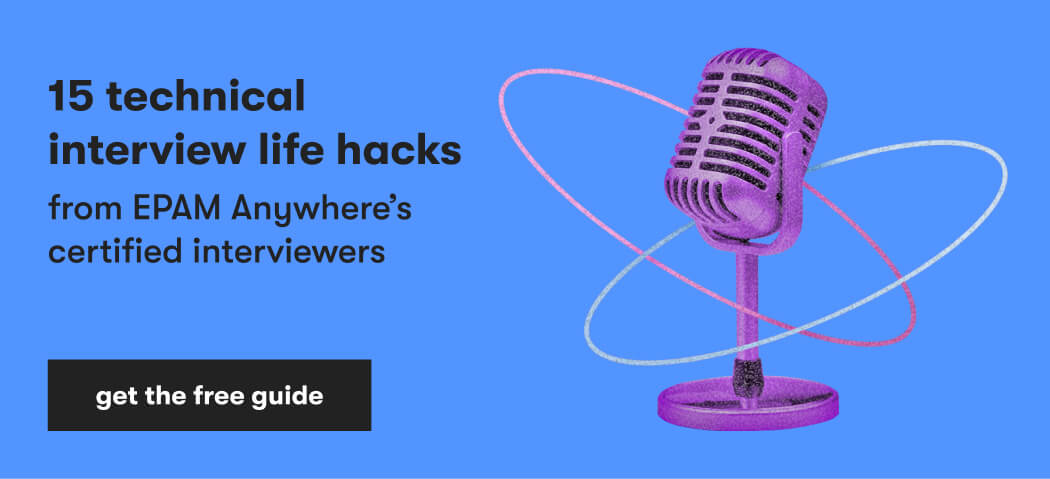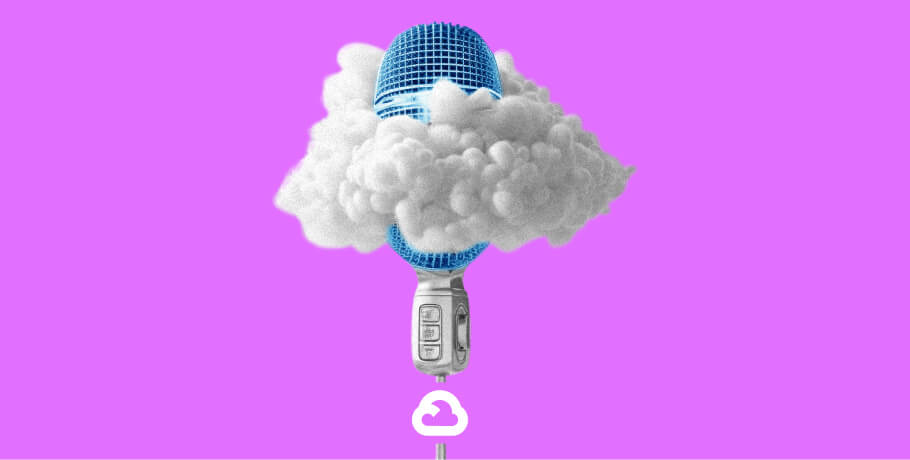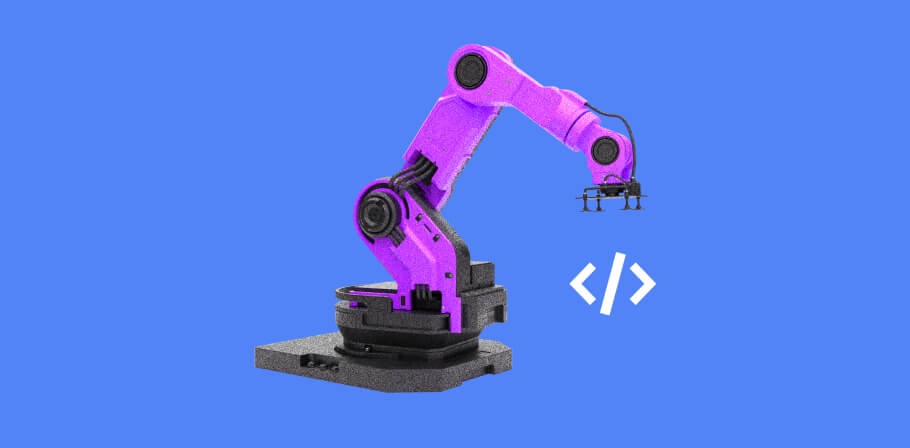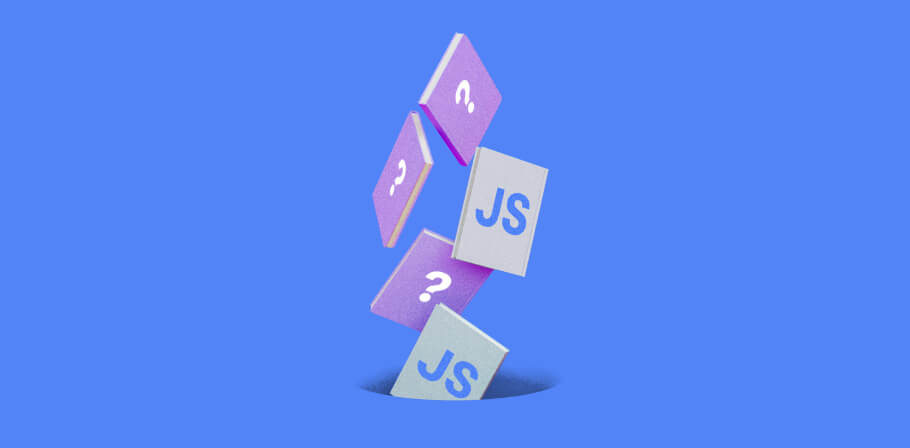If you’re gearing up to land a new job, take a look at these most frequently asked interview questions for senior software engineer positions.
Applicants for both on-site and remote senior software developer jobs can expect a slew of questions covering technical ability, topics you should be familiar with, and problem-solving.
This post covers over 20 senior software engineer interview questions and answers to help you prepare for and ace the interview.
your career, your terms
Enjoy the freedom to build your career on your terms and use your skills to contribute to global projects.
Top senior software engineer interview questions and answers
Here is a comprehensive guide to the top interview questions for senior software engineers. Let’s dive in.
1. What are the limitations of OOP?
Some of the OOP limitations are as follows, and you’re free to add yours on top:
- Programs produced using this method may be considerably larger than programs written using the procedure-oriented methodology.
- This style of developing software also necessitates a significant amount of preparation and forethought. The OOP code might be hard to comprehend if you don't have the relevant class documentation.
- Additionally, apps might consume a lot of memory in certain situations.
2. What is the difference between prototype inheritance and classical inheritance in OOP?
There are two types of abstractions in traditional object-oriented programming: classes and objects. An object is an abstraction of a real-world entity. In contrast, a class is an abstraction of an object or another class (think of it as a generalization).
As a result, as the degree of abstraction grows, entities become more generalized, and as it drops, entities become more particular. The level of abstraction is comparable to a scale spanning from more particular entities to more generalized ones.
Because prototypal object-oriented programming only has one form of abstraction, prototypal object-oriented programming languages are considerably simpler than classical object-oriented programming languages (objects).
Objects in prototypal object-oriented programming languages are abstractions of real-world objects (which are called objects) or other objects (known as prototypes of the objects they abstract). As a result, a prototype is a generalization.
In prototypal object-oriented programming languages, objects can be created from scratch (ex-nihilo) or from other objects (which then become prototypes of the newly created object).
3. What is the difference between continuous delivery and continuous deployment?
You can't talk about CDy and CDt without talking about continuous integration (CI).
- Continuous integration is used to automate your builds. It is the practice of swiftly and frequently merging code modifications into the main pipeline. CI is the foundation of a build process that is predictable, reliable, and always accessible. With CI, revisions are confirmed by generating a build and running automated tests against it to avoid bugs and issues that can emerge if all changes are merged into the release branch on release day.
- Continuous delivery augments continuous integration by automatically releasing any code changes following the build step to the test or production environment. This implies that, in addition to automated testing, you have an automatic release procedure and can deploy your application anytime by just pressing a button.
- Continuous deployment is a step beyond continuous delivery. Every update that makes it through all phases of your development pipeline is distributed to your consumers using this method. There is no human interaction; only a failing test precludes a new modification from going into production. Continuous deployment is a fantastic technique to shorten the feedback system with your clients and relieve strain on the team because there is no longer a fixed release day.
4. What software configuration management tools have you used?
Senior software developer interview questions often ask about the top configuration management tools, including:
- Ansible
- CHEF
- JUJU
- ConfigHub
- CFEngine
- SALTSTACK
- RUDDER
- SolarWinds Server Configuration Monitor
- Octopus Deploy
The list goes on. However, it is always recommended that you mention what you know well in case there are follow-up questions.
5. In what cases is a microservices architecture better than a monolithic one?
A monolithic application is constructed as a cohesive entity, whereas a microservices architecture comprises smaller, individually deployable services.
Microservices are not a panacea, but they alleviate many issues for developing software and businesses.
Because a microservices architecture is made up of pieces that run separately, each service may be built, upgraded, distributed, and scaled independently of the others. Software upgrades may be carried out more often, resulting in higher dependability, availability, and performance.
They are therefore perfect for big data apps, modernization and phasing out of legacy apps (for example, those typically upgraded by Salesforce developers), real-time data processing, adoption of the DevOps model, multi-group developments, and other projects that require the unique benefits offered by microservices.
6. What types of code smells do you know?
A code smell in computer programming is any trait in a program's source code that may signal a larger issue and thus require refactoring. Some of the common ones include:
- Bloaters: Long Method, Primitive Obsession, Long Parameter List, Oddball Situations, Data Clumps, Class Doesn’t Do Much, Required Setup/Teardown Code, etc.
- Obfuscator: Poor Names, Vertical Separation, Comments, Regions, Inconsistency, Obscured Intent, etc.
- Change preventers: Shotgun Surgery, Poorly Written Tests, Parallel Inheritance Hierarchies, Divergent Change, Inconsistent Abstraction Levels, Conditional Complexity, etc.
- Couplers: Tramp Data, Artificial Coupling, Middle Man, Feature Envy, Indecent Exposure, Hidden Dependencies, Law of Demeter Violations, Inappropriate Intimacy, Hidden Temporal Coupling, etc.
- Dispensables: Dead Code, Lazy Class, Duplicate Code, Speculative Generality, Data Class, etc.
- Test smells: The Nitpicker, The Greedy Catcher, The Sequencer, Fragility, Not Enough Tests, Dry v. Damp, The Loudmouth, The Enumerator, The Mockery, The Giant, The Hidden Dependency, The Void, Hidden Tests, Wait and See, The One, Roll the Dice, etc.
7. How do you prevent technical debt?
The projected cost of redesigning software is referred to as technical debt. It results from using simple, constrained solutions during software development to save production time. To prevent this, some measures can be taken:
- Create proper documentation before beginning any project to ensure that fixes, tests, and implementation are all accounted for. Update this documentation regularly.
- Use agile development approaches to achieve speed without taking shortcuts while having the valuable ability to make relevant modifications as the project continues.
- Choose or put together a team of developers that you can trust to always deliver what is needed. Competent developers make it easy to collaborate with minimal friction and mistakes.
- It is important not to give in to the temptation to save money and time. The tradeoff is not worth it. Quality should always be king if you don’t want to go back and make changes after the fact.
- Testing is important and must be established in every stage with a checklist of milestones and modifications to complete before moving to the next stage.
- An annual system maintenance plan is crucial for a senior software engineer to succeed.
There are more measures to implement, with the underlying goal being the prevention of costly mistakes and decisions.
8. What deployment strategies have you worked with?
Deployment strategies are practices used to upgrade or change a running instance of an app. Some of the common types of deployments include:
- Basic
- Multi-service
- Rolling/Ramped
- Blue-Green
- Canary
- A/B testing
- Recreate (Highlander)
- Shadow
The strategies fit different situations and are often chosen based on how they impact the system and end users.
9. What is a testing pyramid?
The testing pyramid is a model that categorizes software testing into three forms. This assists quality assurance and development experts in ensuring improved quality, reducing the time required to uncover the underlying cause of errors, and developing a more dependable testing system.
There are three layers in the testing pyramid. The pyramid's base is used for unit testing, the middle stage is used for integration testing, and the top and final layer is for user interface and exploratory testing.
10. Explain the process of end-to-end testing
End-to-end testing is a software testing approach that evaluates the complete software from start to finish, including its integration with other interfaces.
End-to-end testing considers the complete software for dependencies, data integrity, and connectivity with other systems, databases, and interfaces to simulate a complete production environment.
It checks batch and data processing from various upstream and downstream systems and the software system, which is how the approach gets the name "end-to-end." End-to-end testing is often performed following functional and system testing.
It simulates real-time conditions by using genuine production data and a testing environment. End-to-end testing is also known as chain testing.
11. What are the benefits of TDD over BDD?
Test Driven Development (TDD) and Behavior Driven Development (BDD) have their own merits and demerits. When comparing the two, TDD beats BDD when it comes to:
- Projects that involve API and third-party tools
- Projects that are meant to reduce the likelihood of finding bugs during testing
- Projects where tests have to satisfy just the developer and their code, in contrast to BDD, where the tests have to satisfy both the developer and customer
Agile-led teams have widely adopted test-driven development, and there are many different tools to help teams get on the same page. Unfortunately, there are fewer tools for behavior-driven development since it involves communication between business and technical teams.
12. What security standards do you know?
Application security (AppSec) is now critical to ensuring business continuity. While security is never synonymous with compliance, you should be familiar with the following application security standards to offer you minimal baselines for implementing best practices:
- International Organization for Standardization (ISO) 27034
- Center for Internet Security (CIS) Control 16: Application Software Security
- Payment Card Industry (PCI) Payment Application Data Security Standard (PA-DSS)
- OWASP Application Security Verification Standard (ASVS)
- National Institute of Technologies (NIST) Special Publication (SP) 800–218 (DRAFT)
- CWE (Common Weakness Enumeration)
- MISRA-C (Motor Industry Software Reliability Association) for the C programming language.
- HIPAA (Health Insurance Portability and Accountability Act)
- The Web Application Security Consortium (WASC)
13. How do you prevent sensitive data exposure?
Sensitive data is highly confidential information that has to be kept secure and unavailable to those without authorization. Sensitive data comprises information such as people's home addresses, salaries, customer data, credit/debit card data, and information that should be protected in case of a data breach.You can prevent exposure by:
- Deleting all sensitive data once it has served its purpose
- Encrypting all the sensitive data you hold
- Using security testing tools to catch issues early
- Predicting the threats you may face and preparing for or defending against them
- Disabling caching and autocomplete forms that contain or collect sensitive background information
- Using cloud services like KeyVault in Azure or KMS in AWS
- Using strong passwords and ciphers
- Classifying data
14. Name OWASP Top 10 Security Flaws
The OWASP Top 10 is a solid starting point when building secure code. A significant percentage of apps have a security issue that falls in the OWASP Top 10. They include:
- Injection
- Sensitive data exposure
- Broken authentication
- Broken access control
- XXE injection
- Security misconfiguration
- Insecure deserialization
- Cross-site scripting
- Insufficient logging and monitoring
- Using components with known vulnerabilities
15. When is it best to apply SAFe?
SAFe (Scaled Agile Framework) is usually best applied when:
- There are no other agility transformation efforts underway.
- You prefer genuine change over cosmetic changes.
- A release cycle of 10–12 weeks is appropriate.
- Hardware or other products with long lead times (up to 10 weeks) need to be integrated with items with shorter lead times.
- There is no desire to downsize the organization.
- There is no desire to create a Lean/Agile organization with solely Lean/Agile positions at various levels, such as Architecture Owner, Flow Manager, and Product Owner.
- Kanban is utilized at all levels because it is implemented at the team level.
- You want to enhance team performance, be comfortable, and be ready to become agile.
- DevOps is completely accepted, and test automation is an integral element of how the company operates.
- Everyone impacted by SAFe receives a formal SAFe® training. SAFe is documented, but mentality change is required, which may be accomplished through in-class instruction.
- Product Owners are completely empowered and no position undermines their function.
16. Name and explain Scrum roles
There are three main Scrum roles. They include:
- Scrum Master, ensuring that a Scrum team operates as efficiently as possible by following Scrum ideals, keeping the team on course, preparing and conducting meetings, and resolving any roadblocks that may arise.
- Scrum Product Owner, ensuring that the Scrum team is on the same page as the overarching product goals. They comprehend the product's commercial requirements, such as consumer expectations and industry trends.
- Development Team, comprising experts who do the work in a Scrum sprint on the ground. This implies that members of the development team span any skill set required to meet sprint objectives.
17. Have you ever had to introduce a new process at work? What approach did you take to gain cooperation?
Whatever it was you introduced, the methods of gaining cooperation tend to stay the same:
- Communicate clearly why the change is necessary.
- Have the backing of the leadership and key figures within the organization.
- Adapt the learning material to fit the employees’ needs.
- Use visual aids to help speed up the adoption of your new processes.
- Share any documentation where relevant or necessary.
- Make sure the employees don't feel pressured to succeed or fear failure.
18. Describe a situation where you successfully convinced others of your ideas
Whenever you have to convince others of an idea in a workplace, there are some steps to take:
- Do favors for others, especially when they do not ask much of you, and you’ll have willing listeners when you pitch ideas.
- Establish what your goals are, so others see something to focus on.
- Initiate a dialogue with the people most affected by changes the idea may bring.
- Use reliable sources to guide your idea.
- Prepare what you want to say or implement beforehand to grab your audience’s attention and keep it during your pitch.
- Show your audience what the outcome will be, so they have an incentive to want what you are suggesting.
There are more ways to convince people of your ideas, and they should all be leveraged appropriately to push for change.
19. Have you ever participated in direct communication with a client?
A prototypical developer is focused on the lines of code and associated chores and is often unconcerned with the customer's demands. That's not always the case in real life, though.
The software engineering business is continually expanding, and we are increasingly meeting programmers who do not mind engaging in communication with the customer.
This strategy, it turns out, helps you build better products. Furthermore, programmers' inventiveness, innovative thinking, and expertise can prevent various challenges during development.
20. Have you done user research? What kind?
User research is classified into two types:
- Quantitative research is generally exploratory and is used to define an issue by creating statistical data or data that can be converted into meaningful statistics. Online polls, paper questionnaires, mobile surveys, longitudinal studies, site interceptors, opinion surveys, and systematic observations are all frequent data gathering approaches.
- Qualitative user research is an observational examination of behavior. It's about getting to know people's ideas and practices on their own terms. Contextual observation, ethnographic research, interviews, field research, and controlled usability testing are some of the methodologies that might be used.
21. Have you ever had to make a high-impact decision? How did you handle it?
Handling high-impact decisions is a necessary step on your way to becoming a senior software developer. To make such decisions, you have to include everyone who will be affected by the changes you make. That is why when you are about to make a high-impact decision, you need to make sure you:
- Identify and define the context and constraints.
- Present at least two solutions, to avoid falling victim to the law of instrument bias.
- Log every decision made and all relevant data surrounding it to ensure that you can always identify why you made a change and how you made it.
- Hold meetings or talks with everyone involved to get feedback on what you would like to implement.
After all that, you can document the changes, implement them, and communicate relevant information to the involved parties.
22. What’s your understanding of project success?
A project is deemed successful if it is finished on schedule, under budget, meets the objectives, scope, and performance requirements, and is accepted by users.
23. Are you an open-source contributor?
People within and outside of the industry agree that contributing to open-source projects is a great way to learn, teach, and generally make the software many people rely on much better.
It is a good look on your resume and a great way to show that you have passion, given that no one is paying you to do something good. Suffice to say, it won't hurt to say you do contribute. However, ensure you avoid any awkwardness if a follow-up question is thrown your way.
Bonus tips: how to make a great impression
Some things to keep in mind when attending a senior software engineer interview include:
- Be concise when answering questions to ensure your answer fits into 30–90 seconds.
- When answering senior software engineer behavioral interview questions, use the STAR format.
- Maintain a dialogue with the interviewer by asking questions or keeping the interaction conversational to avoid awkward silence.
- Do not overextend your abilities beyond your knowledge.
- Prepare for any senior software engineer technical interview questions you may be asked by brushing up on material you have not reviewed in a while.

As Chief Editor, Darya works with our top technical and career experts at EPAM Anywhere to share their insights with our global audience. With 12+ years in digital communications, she’s happy to help job seekers make the best of remote work opportunities and build a fulfilling career in tech.
As Chief Editor, Darya works with our top technical and career experts at EPAM Anywhere to share their insights with our global audience. With 12+ years in digital communications, she’s happy to help job seekers make the best of remote work opportunities and build a fulfilling career in tech.
Explore our Editorial Policy to learn more about our standards for content creation.
read more




























